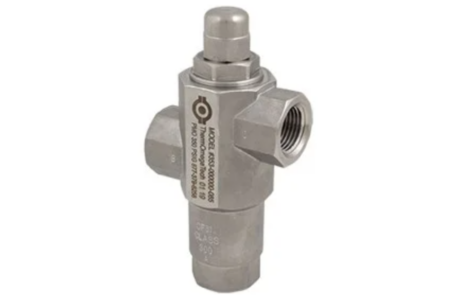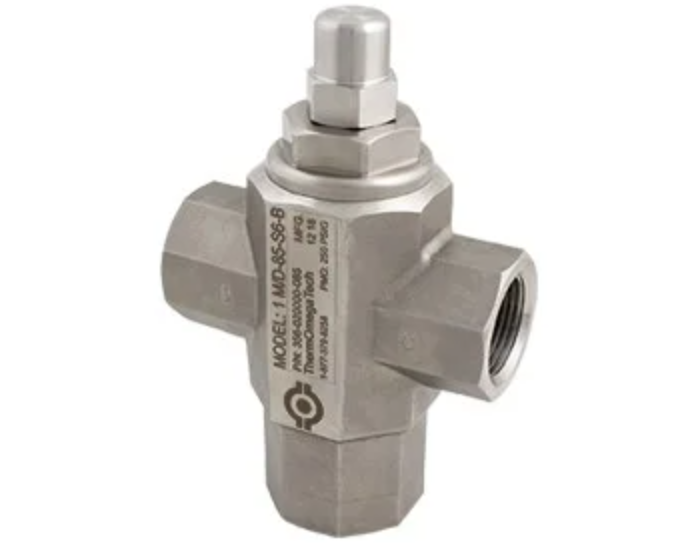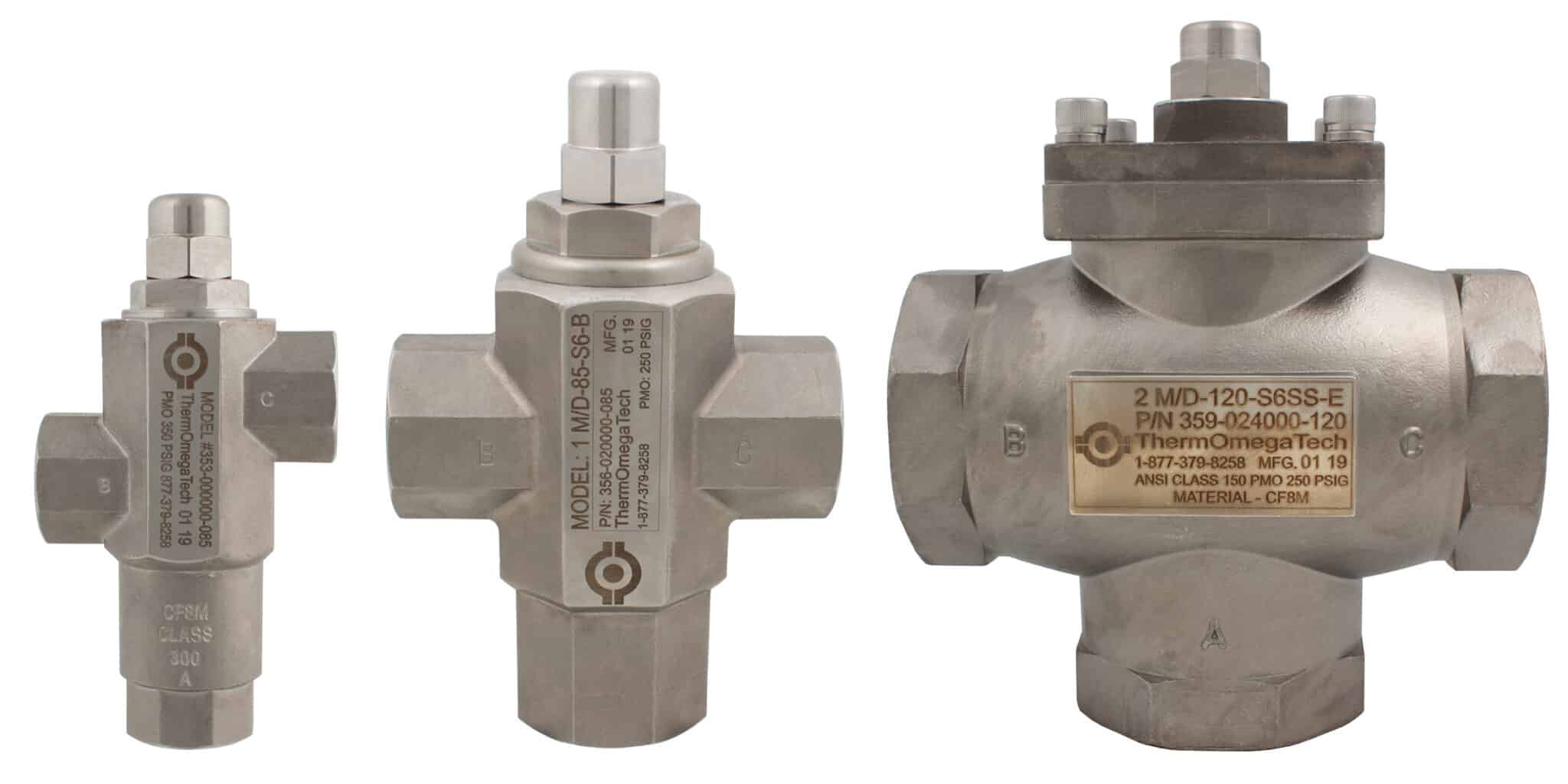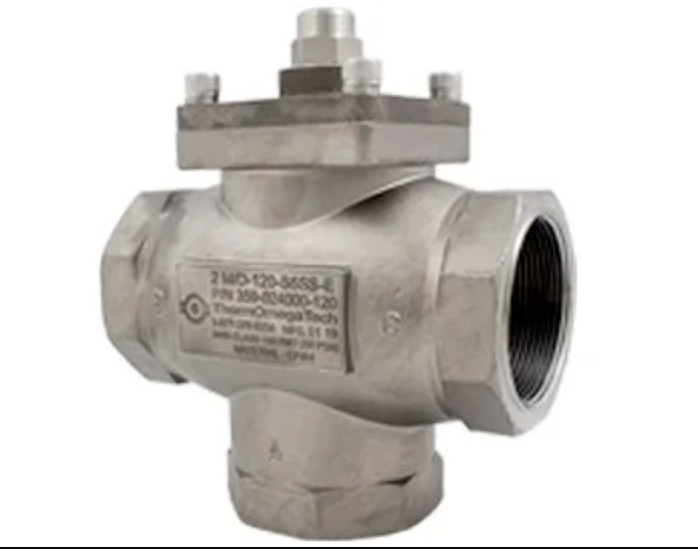Operation
The thermostatic mixing valve/diverting valve is designed to maintain or proportion flow based on temperature in mixing or diverting applications.
In mixing applications where a controlled temperature outlet is required, the 3-way control valve (M/D) will modulate between the hot and cold inlet feeds (ports “B” and “C”) to mix your fluid to the desired specified temperature exiting the “A” port.
In diverting applications where the fluid must be directed from one section of a system to another, the thermal diverting valve (aka thermal bypass valve) will modulate inlet fluid temperature and divert return flow through a cooler/ heat exchanger or bypass it to a reservoir/ bypass loop when fluid temperatures are satisfied. This action assures rapid system warm-up, accurate control of fluid temperature, and reduced back pressure in the return.
Mixing and Diverting Thermal Valves
Mouse over an image of a thermostatic mixing valve/diverting valve to animate.
Thermal Diverting
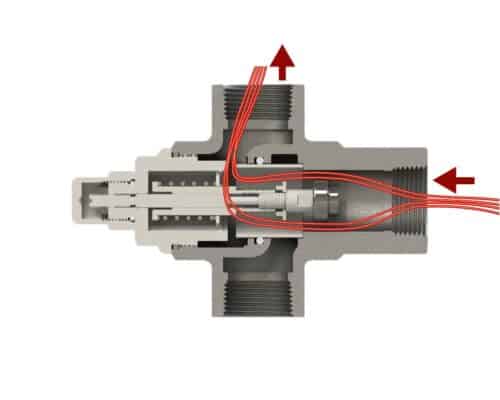
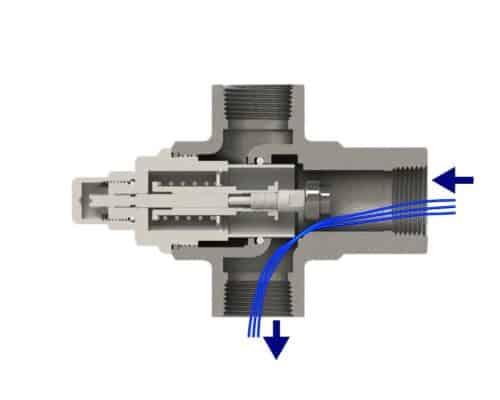
Installed in diverting mode, the valve’s thermal actuator will sense the fluid temperature and automatically divert or switch the inlet flow to either of the two outlet ports depending on the valve’s specified temperature requirements.
Thermal Bypassing
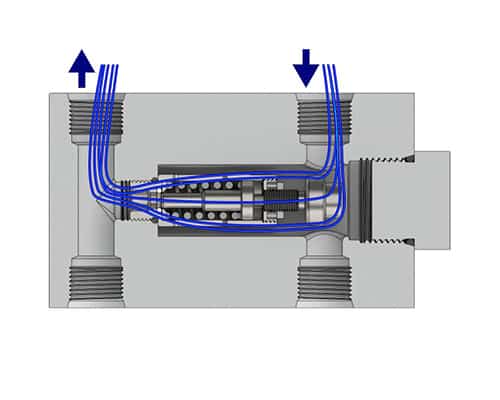
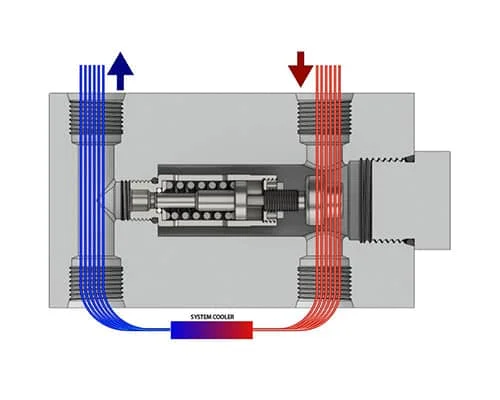
The TBV cartridge can be integrated into a 4-way manifold to monitor inlet flow and divert the fluid based on temperature. Cooler fluid goes through the valve bypass, while hotter fluid goes through the system’s cooler.
Thermal Mixing
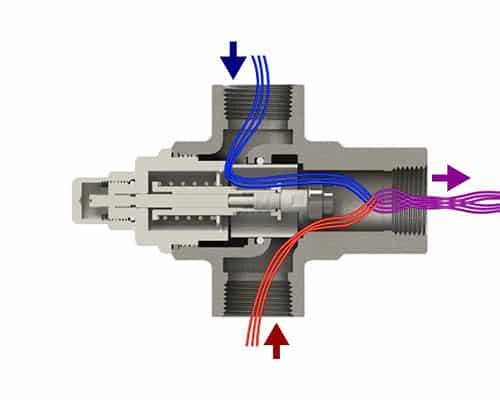
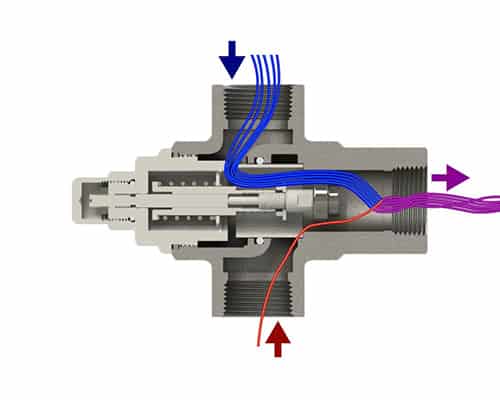
Installed in mixing mode, the mixing valve’s thermal actuator will sense the temperature to automatically proportion the flow of hot and cold fluid from two inlet ports to produce the desired outlet port temperature.
Typical Applications
- Battery Cooling
- Cooling water control for radiator or heat exchanger
- Direct cooling with raw water
- Direct injection water heating
- Electronics system cooling
- Engine and compressor cooling system
- Hydraulic fluid cooling systems
- Hydraulic power units (HPUs)
- Hydraulic thermal bypass
- Loop-type circulation systems
- Lube oil cooling control
- Lube oil thermal bypass
- Temperature control for baths, wash basins, and sinks
- Temperature mixing or diverting
- Thermal Management
- Water saving applications
Design Features
- Exclusive self-actuating Thermoloid® wax blend thermal actuator
- Heavy-duty – rugged construction
- Compact and low mass for fast response
- Operates in narrow temperature band
- Standard valve material is bronze or stainless steel
Benefits
- Self-operating – no external power source required
- Minimal maintenance needed
- Wide temperature range
- Easy installation
- Few moving parts – reduce system wear
Ordering
PART NUMBER1 | DESCRIPTION |
353-00X000-XXX | 1/2” M/D Valve - 316 SS Body, 300 Series SS Internals |
353-02X000-XXX | 1/2” M/D Valve - all 316 SS construction |
353-01X000-XXX | 1/2” M/D Valve - Bronze |
356-00X000-XXX | 1” M/D Valve - Bronze |
356-01X000-XXX | 1” M/D Valve - 303 SS |
356-02X000-XXX | 1” M/D Valve - 316 SS Special Order Only |
359-0X4000-XXX | 2” M/D Valve - SS |

